Let's talk about Mexican food

Mexico, a nation with an ancient civilization in the Americas, has nurtured ancient Indian cultures such as the Maya, Aztec, Toltec, Olmeca, and Teotihuacan. Twenty-one of its sites have been declared "Cultural and Natural Heritage of Humanity" by the United Nations. The Pyramid of the Sun and the Pyramid of the Moon, built north of Mexico City in BC, exemplify this splendid ancient culture.

Mexico's culinary culture inherits the characteristics of the Mayans and Aztecs, characterized by rich flavors and vibrant colors. The Aztecs were among Mexico's earliest inhabitants, and their food, including corn, beans, chilies, and chocolate, had a profound impact on Mexican cuisine. The arrival of Columbus brought European cooking methods and ingredients, which gradually became integrated into Mexican cuisine. Later, Africans and Asians also brought their own foods and cooking styles to Mexico, further diversifying Mexican culinary culture.
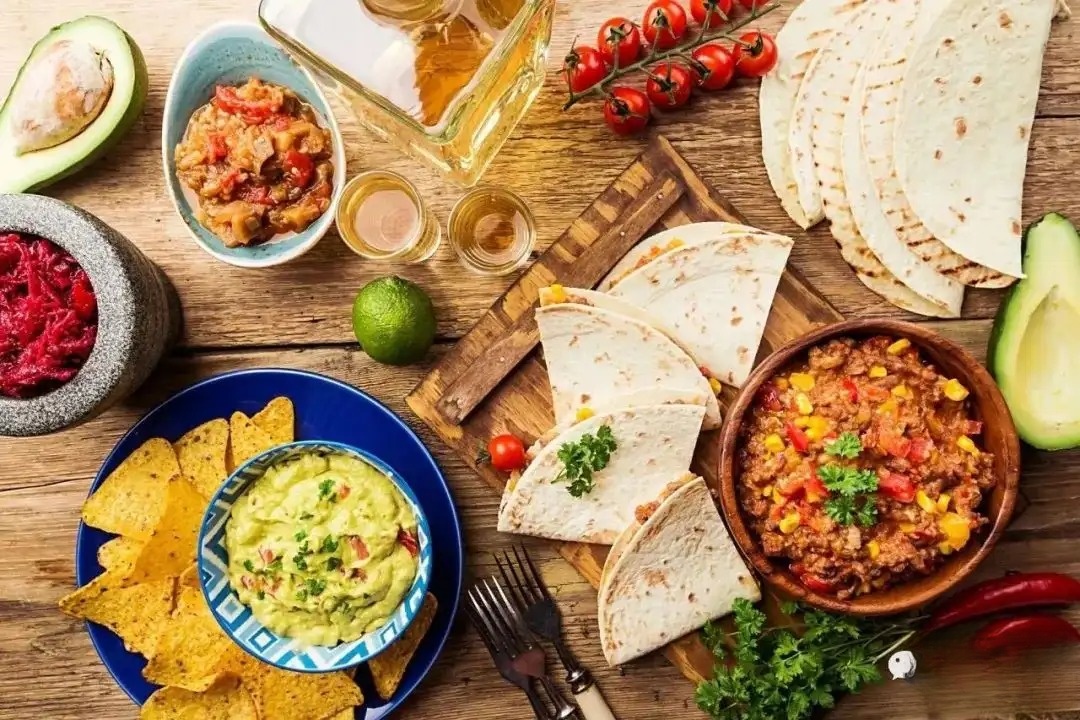
Mexican culinary culture also emphasizes the decoration and presentation of dishes. Whether it's red sauces, green rice, yellow cheese, or a variety of condiments, or even flower petals sprinkled on food, cut into different shapes, or painted on it to add artistic and visual appeal, the richness and diversity of Mexican culinary culture is evident.
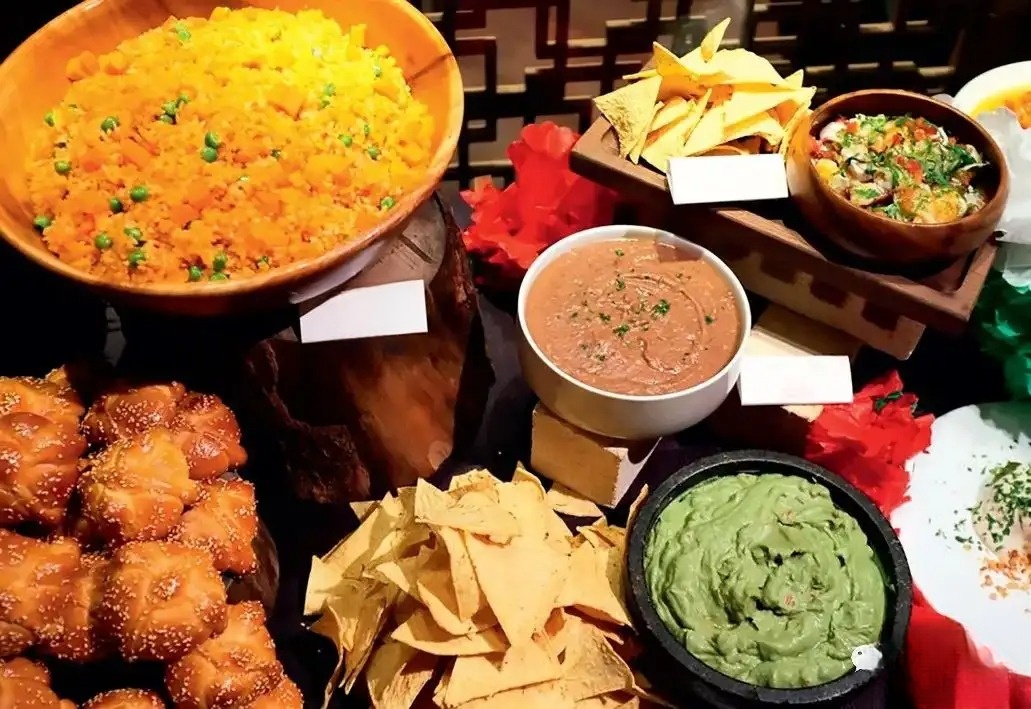
One of the hallmarks of Mexican cuisine is the abundant use of chili peppers. Mexicans love spicy food, and chili peppers play a significant role in both the flavor and color of Mexican cuisine. There are many different types of chili peppers used in Mexican cuisine, from relatively mild green and red bell peppers to the very spicy habanero and jalapeno peppers.
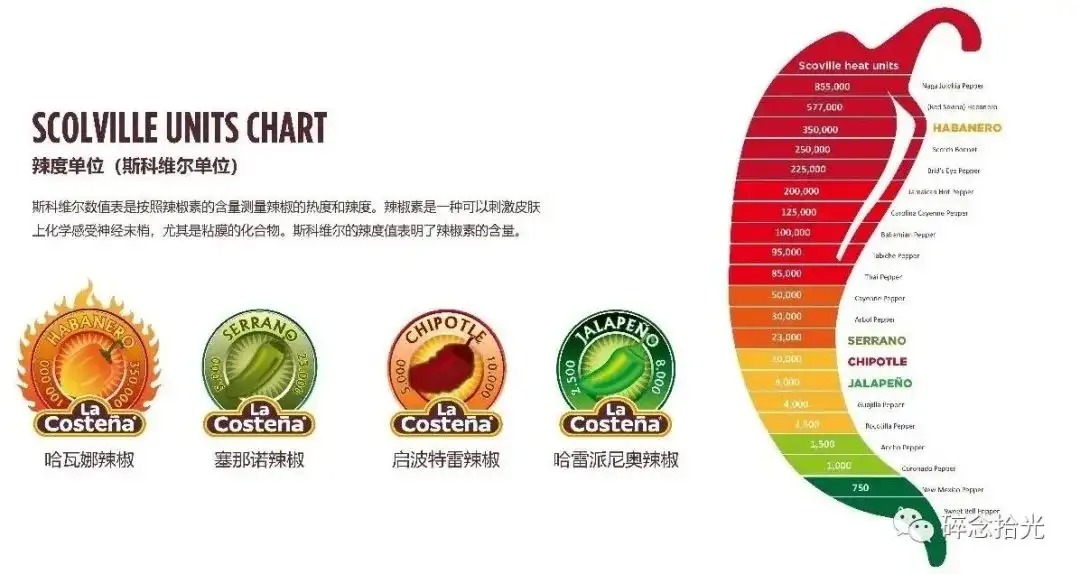
Archaeologists have discovered that chili peppers were already growing in Mexico around 7500 BC. As Mexican civilization developed, chili peppers became increasingly common. During the Spanish colonial period in the 16th century, chili peppers were introduced to Europe and other regions, becoming an essential culinary ingredient worldwide.
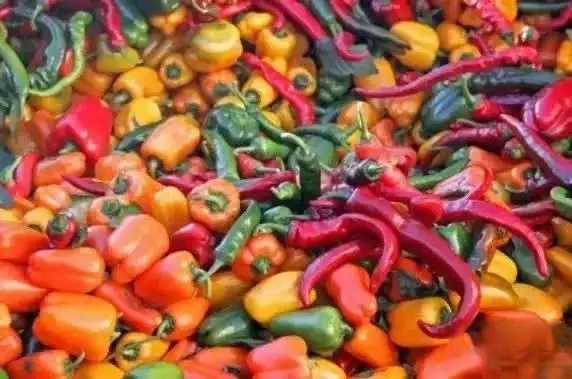
One of Mexico's most iconic dishes, chutney is a dish that embodies the three colors of the national flag: the green of bell peppers and parsley, the white of chutney, and the red of pomegranates. Hailing from the state of Puebla, where the cuisine is countless, chutney undoubtedly holds a special place, even woven into the cultural traditions of its inhabitants and a symbol of their identity.

The main ingredient in this dish is the giant green Puebla pepper. It's stuffed with pork or beef and topped with local apples, milk pears, and Creole peaches. These are characterized by their relatively small size and slightly sour taste. Dried fruits like pine nuts, almonds, and raisins can also be added.
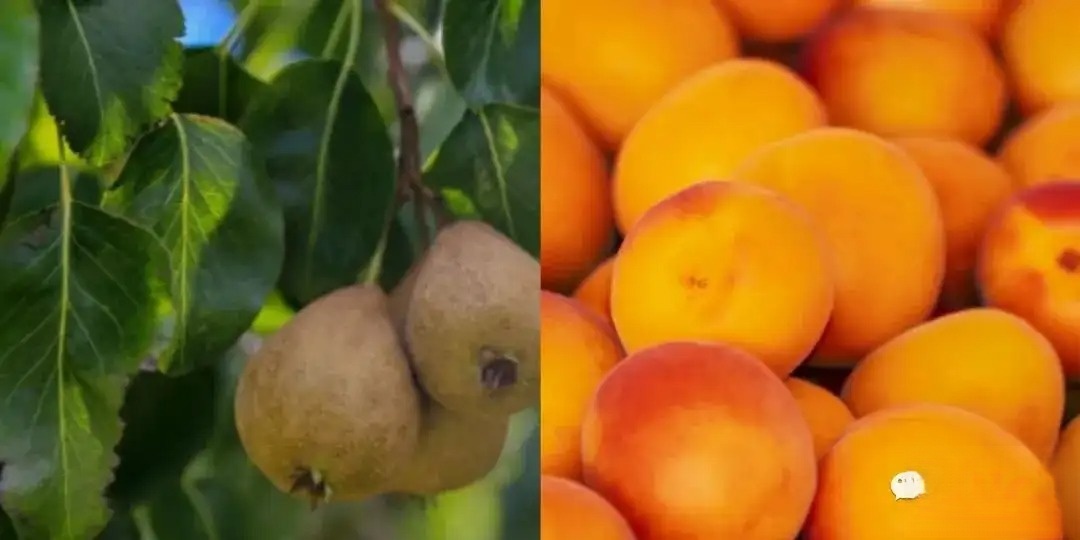




What color is corn? People from other countries would likely answer "yellow," but Mexicans would say "colorful." The most common corn grown worldwide is yellow, but Mexican corn pales in comparison : Mexico boasts 64 varieties of corn, varying in length and color, including white, red, pink, yellow, gold, purple, blue, black, and even multicolored corn, creating a truly artistic experience .

Mexico's land is blessed with bright sunshine, fertile soil, and a warm, humid climate, creating ideal conditions for growing corn. Here, fields of corn shimmer in the sunlight like rainbows, while the sturdy corn stalks stand proudly like warriors. At harvest time, the colorful kernels, like a rainbow's smile, blanket the land.







A traditional Mexican staple, tamales, also known as tamales, are a Mesoamerican staple. They consist of masa, or dough (usually corn starch-based), wrapped in a corn husk or banana leaf and steamed. The husk is discarded before eating. Tamales can be filled with meat, cheese, fruit, vegetables, chilies, or any other pre-prepared food to suit your taste .

The tamale originated in Mesoamerica between 8000 and 5000 BC. The Aztec and Mayan civilizations, and before them the Omeca and Toltec civilizations, used the tamale as a portable food, often to supply armies, or for hunters and travelers.

4. Machetes
Machete is a giant tortilla about a meter long with different fillings. You can choose the filling you like. The only downside is that it is not easy to buy. Most of the time you can only find it in the suburbs of Mexico City .

5. Tlayudas
Often called Mexican pizza, tlayudas are made with tortillas, enchilada sauce, tomatoes, black beans, green onions, and Mexican cheese . They can be eaten plain or wrapped like a tortilla .

6. Churros
Dessert lovers will absolutely adore this sweet churro. Watching people passing by on the street, each holding a small cup of fried dough in one hand and a cup of hot chocolate in the other, is a beautiful sight in the city. Unlike traditional Spanish churros, this one has a layer of cinnamon sugar on the surface and doesn't need to be dipped in chocolate sauce. Locals prefer to eat it with hot chocolate .

7. Grilled Corn Elot e
Corn is an essential food for Mexicans, appearing in nearly every dish and serving as their primary staple. Whether made into tortillas, chips, or simply cooked in its simplest form, it's one of Mexico's most popular street foods. The husks are peeled to the ends and secured with small pieces of corn husk or string. After cooking and grilling, the corn on the cob is coated with Mexican sour cream or mayonnaise, and finally sprinkled with cheese, chili powder, and other seasonings.

8. Quesadillas
Quesadillas (Mexican pie), also known as "cheese tortilla", is a round tortilla filled with cheese, meat, vegetables, etc., which is folded into a semicircle and placed on a baking tray to heat. As the cheese melts, the tortilla slowly sticks together.

9.Mexican Corn Cup Esquites
Esquites (Mexican corn cups), corn kernels are cooked in chicken broth, placed in a cup/bowl, and mixed with mayonnaise, cheese, chili powder and other seasonings. The sweet corn and chili powder have a rich taste.

Material:
2 cups corn
1 Serrano Pepper
2 tablespoons butter
2 tablespoons feta cheese
2 tablespoons mayonnaise (optional)
2 scoops of Sour Cream
Chili powder to taste
1/4 lime
practice:
1. Remove the seeds and dice the pepper. Heat the pan with butter and sauté the pepper.
2. Pour the corn into the pan and stir-fry with the pepper. Flatten it and fry it. Stir-fry again. You can taste it in the middle. As long as the corn tastes spicy, you can remove it from the pan and put it in a bowl.
3 Add lime juice and stir
4 Add mayonnaise, chili powder, sour cream and crushed feta cheese and mix well
5. Sprinkle some grated feta cheese on top

10. Corn porridgeAtole
Mexicans call it Atole . It's an ancient hot cornmeal drink, often flavored with sugar and spices like cinnamon and vanilla. On a winter morning, a rich cup of Atole can energize you for the whole day.
Ingredients:
200g corn kernels
100ml butter
1 tablespoon olive oil
half an onion
2 cloves of garlic
1 bowl of chicken or chicken broth
Chili powder or fresh chili peppers to taste
100 ml yogurt or sour cream
Salt to taste
Pepper to taste
Garnish:
Fresh chopped cilantro
chopped avocado
Crispy Tacos
practice:
1. Place the corn in a large pot and add enough water to cover. Add the onion and garlic, then bring the pot to a boil over medium heat. Once boiling, reduce the heat to a simmer and simmer until the corn is soft.
2. Pour the corn into a blender or use a blender to puree it.
3. Heat some butter or olive oil in a pan, add chili powder or chopped chili and stir-fry for a few minutes.
4. Add the chili powder to the pot and the corn paste and stir well.
5. Bring the corn paste to a boil again, then reduce the heat to a simmer, stirring occasionally to prevent it from sticking.
6. Add salt and pepper to taste and mix well.
7. Pour the cooked Mexican corn porridge into a bowl, sprinkle with chopped cilantro and avocado cubes, or serve with crispy corn rolls or other side dishes.

11. Tortilla chips
Tortilla chips are made by cutting raw tortilla dough into pieces, sprinkling them with spices, and then baking or frying them. They're most commonly eaten with salsa, guacamole, or salad dressing. You can also sprinkle cheese, chives, or other toppings directly onto the tortilla chips, or simply eat them plain.

Material:
250g corn flour
250g all-purpose flour/low-gluten flour
Pepper to taste
Five-spice powder to taste
250 ml water
salt to taste
1 tablespoon oil
3 grams of baking powder
practice:
1. Add corn flour, all-purpose flour/low-gluten flour, a little salt and baking powder, add warm water and knead into a dough
2. Take a piece of baking paper that is twice as big as the baking tray, fold it up and down, put the dough in the middle, use a rolling pin to roll the dough into a large sheet through the baking paper. The thinner it is, the crispier the corn flakes will be. Cut it into equal triangles.
3. Preheat the oven to 180°C (350°F) and transfer the cut cornflakes to a baking sheet. For a more crispy and flavorful texture, grease the surface with oil and sprinkle with spices or sesame seeds before baking.
4. Bake in the oven for 15-20 minutes. The cornflakes that have been greased with oil are easy to burn, so you need to pay attention to it in the last 3-5 minutes and bake until golden brown.

12. Chipotle sauce
Material:
2 tomatoes
2 cloves of garlic
3 small onions
Chili pepper to taste
Coriander as needed
a pinch of salt
pepper to taste
1 tablespoon olive oil
A little lemon juice
Chipotle paste as needed

practice:
1. First, cut the tomatoes in half and the onions into small pieces. Place all the ingredients (except the cilantro) on a tray and drizzle with olive oil. Sprinkle with a little salt and pepper and bake in the oven at 220℃ for 10-15 minutes.
2. When the tray is taken out of the oven, the vegetables are not fully cooked, but the skin is slightly crispy.
3. Throw all the roasted vegetables into a blender and add a heaping spoonful of chipotle chili sauce (use less if you prefer spicy food)
4. Grab some coriander leaves and throw them into the blender along with the other vegetables
5. Squeeze some fresh lemon juice, half a lemon is enough, then pour in some water (about one-third cup), sprinkle a little pepper, and put the ingredients into a food processor to make a paste
6. Heat the olive oil, pour the stirred hot sauce into the pot, and cook over medium-high heat for five minutes, stirring constantly to prevent the hot sauce from sticking to the bottom of the pot.
7. Mexican hot sauce is ready, it goes well with eggs, burritos and tacos

13. Pico de Gallo
Pico de Gallo (Mexican chutney ) is the perfect accompaniment to tortilla chips. This sauce also requires tomatoes, onions, chili peppers, and cilantro. However, it doesn't require garlic, and lime juice can be substituted for the lemon juice.

Material:
1 tomato
A quarter of an onion
2 lemons
Two cilantro
1 chili pepper
a pinch of salt
pepper to taste
1 tablespoon olive oil (optional)
A little lemon juice
Chipotle paste as needed
practice:
1. Take a quarter of an onion and cut it into small pieces
2. Cut the tomatoes into long strips and then into small pieces
3. Chop the chili pepper and two cilantro stems as finely as the other ingredients
4. After mixing all the ingredients together, squeeze the juice of half a lime
5. Add salt and pepper to taste, olive oil is optional, and stir well.
⚠️One tomato, one pepper, a quarter of an onion and two cilantro stems is the golden ratio~

14. Mexican Rice
Most people confuse Mexican paella with Spanish paella, but they're actually quite different. The difference lies in the rice and seasoning. Mexican paella eschews the saffron used in Spanish paella in favor of Northeastern rice, a more palatable rice from China. Its characteristic is that it's not too mushy, yet retains the perfect chewiness . Spanish paella incorporates saffron, which gives it a sweet flavor and a bold yellow color. Mexican paella uses cumin, which adds a spicy aroma .

Ingredients:
1 tomato
1 onion
1 green bell pepper
1 squid
Appropriate amount of shrimp
Scallops as needed
appropriate amount of mussels
A little ham
1 bowl of broth
A pinch of pepper
practice:
1. Boil water in a pot, make a cross on the top of the tomato , then put it in the pot and blanch it for half a minute, then take it out and peel off the skin of the tomato.
2. Dice onions, green and red peppers, slice scallops, squid and other seafood
3. Heat oil in a pan, add onion, ginger and garlic and fry until fragrant , then add tomatoes and stir-fry evenly, add salt to taste and set aside
4. Heat olive oil in a pan, add scallops, squid and other seafood and stir-fry until fragrant. Set aside
5. Put a little oil in the pot, add the soaked rice and stir-fry evenly, add the soup, cover the lid, and simmer on medium heat for 15 minutes
6. Add the fried tomato sauce and seafood, cover with a lid, and simmer on low heat for 15 minutes.
15. Calabacitas
The best thing about zucchini is that it grows in most places , so it’s no surprise that it’s one of the most popular vegetarian Mexican dishes, and Calabacitas is one of the best vegetarian dishes.

16. Pozole
Pozole dates back many years, and it's said to have been used in pre-Hispanic rituals. Today, it's one of the best Mexican soups, slowly gaining popularity around the world. Made from cornmeal combined with herbs and spices, it simmers for hours, sometimes even overnight, for optimal results.

500g minced beef
300g mushrooms
2 jalapeno peppers
2 red bell peppers
Half an onion
4 tomatoes
170g tomato paste
1 can of red kidney beans
3 cloves of garlic
2 tablespoons mixed chili powder
1 tablespoon brown sugar
practice:
1. Peel the tomatoes and cut into small pieces, cut the mushrooms into small pieces, remove the stems of the bell peppers and cut into pieces.
2. Cut two Jalapeños into rings and set aside
11. After 2 hours, add tomato paste. Generally, a small can of 170 grams is available in the market. Use a whole can.
12. Then add 1 tablespoon of chili powder and 1 tablespoon of brown sugar. Add appropriate amount of salt to taste and mix the seasonings thoroughly. Continue to stew for 1 to 3 hours. The longer the time, the better the taste.

13. Pour the cooked Mexican chili bean soup into a soup bowl, sprinkle some cheese on it, garnish with a parsley, and serve with two slices of bread.

18. Corn Pozole Soup
This chili-crushed soup is a major invention of Mexican cooking. It uses three main ingredients: beef or pork, oversized corn kernels, and cooked, crushed guajillo chilies. The resulting broth is rich and, most importantly, red, making it appetizing without being spicy. Every sip offers the perfect aroma of chili peppers.

19. Mole
Mexico is known as the "Land of Sauces," especially its various hot sauces, but Moraí is Mexico's most distinctive sauce. Moraí is a dark red, thick paste. It's made with a wide variety of ingredients, including chocolate, various chilies, raisins, and almonds. In some regions, as many as 32 ingredients are used .

20. Classic Tres Leches Cake
The classic Tres Leches cake, also known as the Three Milks Cake, is a traditional Mexican dessert. This airy sponge cake is soaked in three types of milk: evaporated milk, condensed milk, and whole milk. After absorbing the milk for an hour, the cake's texture is enhanced, becoming soft and moist. This simple, plain cake is instantly transformed into a delicious delicacy. Tres Leches cake is also a favorite among Latin Americans. Some chefs like to add meringue frosting to sweeten the cake, and they can also top it with fruit.

Mexico has been called so many things related to food: the land of cacti, the land of corn, and the land of chilies. Mexico's cuisine is so abundant that it's difficult to list them all. Its people are passionate and enthusiastic, its culture is vibrant, and the influence of Latin America and the Caribbean permeates the country.
